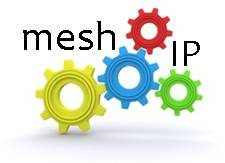 Microsoft’s confirmation that client versions of Windows 8 will include its Hyper-V hypervisor could turn out to be one of the most interesting and significant aspects of the upcoming platform.
Microsoft’s confirmation that client versions of Windows 8 will include its Hyper-V hypervisor could turn out to be one of the most interesting and significant aspects of the upcoming platform.
With a baked-in Type 1 hypervisor, various kinds of use cases that have been mooted for virtualisation will become possible, such as running separate corporate and personal desktop environments side by side simultaneously on the same machine.
This kind of virtualisation is now familiar on servers, where multiple workloads can be consolidated onto one system. However, it is almost unknown on client systems, with the notable exception of Citrix’s XenClient platform, which is intended to let enterprises manage laptops in the manner just described.
But whereas XenClient requires the laptop vendor to integrate the hypervisor into the system at build time, Windows 8 with Hyper-V should make it much easier to implement such a configuration.
Hyper-V’s Live Storage Move feature, as mentioned in the Building Windows 8 blog, also enables virtual machines to be independent of the underlying storage, even allowing the disk image that makes up the VM to be moved from one drive to another without shutting it down.
While Microsoft said the capability can be used for rapid deployment purposes, it also opens up the possibility of greater flexibility in the way virtual desktops are used. Imagine checking out your virtual desktop from the datacentre onto a laptop so you can use it on a business trip, then checking it back in when you return to the office, for example.
Baked-in virtualisation support also means that Windows 8 might be able to support use cases that have been suggested in the past, such as a dedicated virtual partition for security services, which have largely failed to make it into mainstream adoption.
It also gives developers more flexibility for building test environments, as Microsoft points out on the Building Windows 8 blog.
The snag, of course, is that Hyper-V on Windows 8 will require the latest hardware; it relies on a virtualisation feature called Second Level Address Translation supported in current 64-bit processors from Intel and AMD.
Hyper-V support looks like being a significant addition to Windows 8, and many in the industry will be watching with interest to see what Microsoft is going to do with the technology.
- The Customer Edge Drives the Need for NaaS - June 25, 2023
- Blockchain Evolves And Secures - January 13, 2019
- Bessemer Ventures’ 2018 Cloud Computing Trends - February 25, 2018




